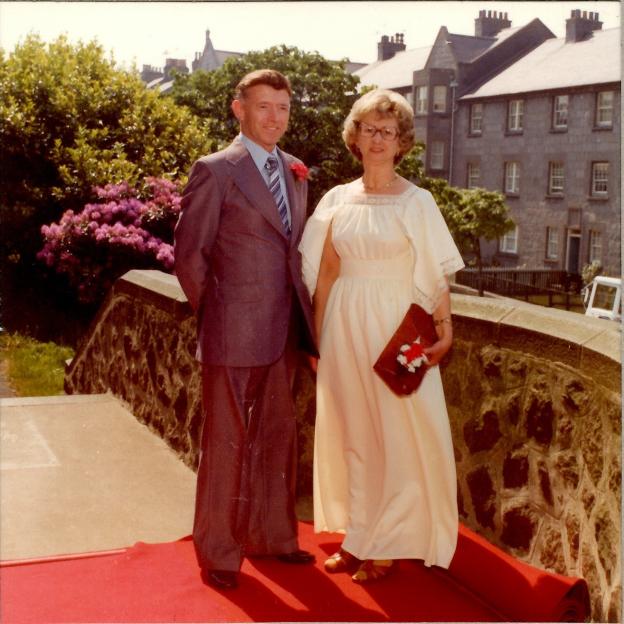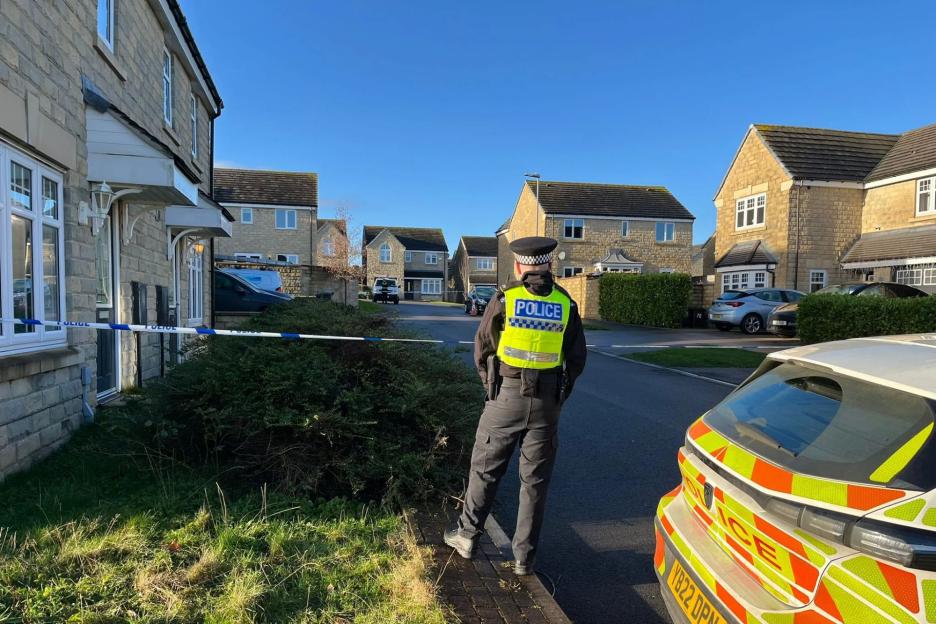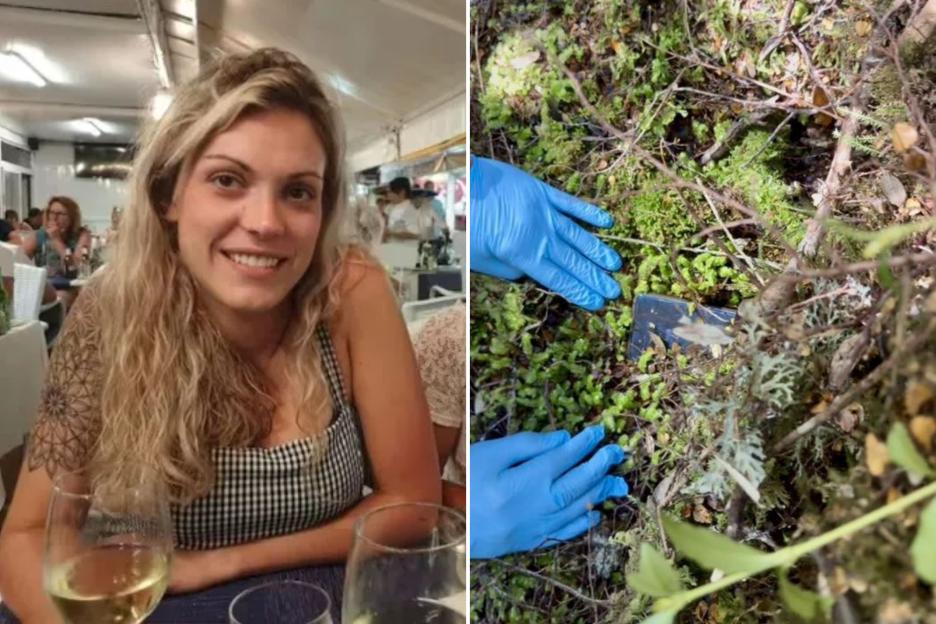WHEN Alex McKay’s phone rang at quarter to ten at night, he knew it wouldn’t be good news.
“It was my mother, telling me my uncle Dod had been murdered,” remembers Alex.
 George Murdoch, known as Dod, was strangled to death in 1983
George Murdoch, known as Dod, was strangled to death in 1983 The taxi driver was gruesomely garroted with a cheese wire
The taxi driver was gruesomely garroted with a cheese wire George’s nephew Alex is fighting for justice
George’s nephew Alex is fighting for justiceThat evening of the 29 September 1983, 57-year-old Dod, whose real name was George Murdoch, had been working West End when he picked up a passenger that â little did he know â would be his last.
Down a quiet street in the tree-lined suburb of Cults on the outskirts of the city, two teenage cyclists caught sight of a violent struggle outside the taxi between George and another man and raised the alarm.
But when the arrived, it was too late.
George was dead, surrounded by a pool of blood, garroted by a cheese wire.
“My father went down with my other uncle, Dod’s brother, to identify the body,” says Alex, who was 26 at the time.
“He never told us himself â but I heard it wasn’t a pretty sight.”
Both his money and wallet had been stolen.
Despite the police launching a manhunt across the city, the killer â described by the two witnesses as a man in his 20s-30s â had seemingly vanished into thin air.
For more than forty years, George’s murderer has escaped justice.
But that might all be about to change â thanks to recent breakthroughs in DNA that mean the case could be closed any minute.
And tens of thousands of pounds are on offer for anyone who can help.
Now, the hunt for the so-called “cheese wire killer” will feature in the brand new two-part Forensics: Murder Case, set to broadcast on Monday 21 and Tuesday 22 July at 9pm.
Decades-long hope
Speaking to The Sun, Alex McKay, now 68, said that finally unmasking the killer would leave him feeling “euphoric”.
He said: “I’ve daydreamed a lot about it.
“I think that as I get older, it would mean more to us. A lot of the people that were around at that that time â Dod’s siblings, my mum and dad, his wife Jessie â they’ve all passed away. I’ll just be gazing up skywards thinking about them â thinking, ‘We’ve done it.’”
 Dod with his wife Jessie. His murder is one of the most infamous cold cases in Scotland
Dod with his wife Jessie. His murder is one of the most infamous cold cases in Scotland George was found in a pool of blood by his taxi
George was found in a pool of blood by his taxi The murder sent shock waves through the city
The murder sent shock waves through the cityAlex fondly remembers his uncle for being the down to earth and kind man he was.
“I loved them both to death,” he said of his Uncle and Auntie, who lived not more than a ten minute walk away from him on the same estate in western Aberdeen.
“Any time I was around him, he was always smiling, always fun to be around â probably because he was a bit of a big kid himself.
“The pictures you see of my uncle, with his carnation, was our wedding.
“He was the usher. That’s how much I respected him as a man.”
George’s murder on Pitfodels Station Road left his family and the rest of the wider community in shock, but it was Jessie, George’s widow, who was most affected.
“She was haunted by the fact that this guy took George’s wallet, which had their address in it,” said Alex.
He could hear Jessie crying through the walls, so he wanted to go and stay with her
Alex
“She felt so sure that he was going to come after her, so she was having to live with that.
“It definitely had a psychological effect that then damaged her health. But she was always fun to be around â she was never all ‘Woe is me’, she was a laugh a minute.”
And an incredible act of kindness from her 12-year-old neighbour, David, may have saved her from the worst of the grief.
“He told his mum that he could hear Jessie crying through the walls, so he wanted to go and stay with her overnight to help her through it,” Alex remembers.
“I don’t know if I would have had the strength to do anything like that at that age, but he did, and he stayed with her for about two or three years, every night.”
Turning cold
Meanwhile, police and locals alike were determined to catch the killer.
At an vs match shortly after the murder, officers were posted at the turnstiles to inspect every single person who entered the ground for signs they might have been involved in the struggle.
 A man who entered a chip shop that same evening was reported to have been acting suspiciously, but police never found out who he was
A man who entered a chip shop that same evening was reported to have been acting suspiciously, but police never found out who he was George’s family are still fighting for the truth
George’s family are still fighting for the truthThere were strong leads at first, including reports of a man who entered a chip shop that same night with cuts on his hands, and other witness reports of a smartly-dressed man running away near to where the murder happened, also that on the night.
And though many assumed the killer was local, police weren’t certain.
They’d even managed to identify the manufacturer of the cheese wire, discovering that exact model had only been sold to a workshop in for disadvantaged children.
But had the murder weapon been brought up by the killer himself, or was it a total red herring?
Despite police making more than 10,000 house-to-house inquiries and taking more than 7,000 statements, the case went cold.
Alex and his wife moved to the US in the late 1990s but returned to Aberdeenshire in 2014 to find little had changed.
They set up a page dedicated to solving the case and found themselves inundated with potential leads.
It felt like my uncle had a voice again
Alex
One in particular came from a man who was drinking in Wilson’s Sports Bar one night in 2015 and began chatting to another punter, who seemed to know details of the murder that were unpublished.
The drinker took a picture of the drinks on the table, meant to show off the number of drinks consumed, but it also captured the torso of the man in question, wearing an T-shirt.
Sadly his face is not visible in the picture, and police have so far been unable to trace him.
Forensic breakthrough
But with new clues to investigate, a fresh team was brought in, led by Det Insp James Callander, giving the case serious attention again.
“It was great,” said Alex. “It felt like my uncle had a voice again.”
Then came a breakthrough.
 DNA from the scene has now been analysed with modern techniques
DNA from the scene has now been analysed with modern techniquesThough traces of DNA were found on forensic evidence in 2001, it wasn’t until 2018 that a full DNA profile was discovered.
There were no matches â but given the crime took place more than a decade before the UK’s criminal DNA database was established, this wasn’t all that surprising.
Come 2024, however, and the science had advanced even more.
Using what’s known as familial DNA testing, the DNA of the suspect was compared to the five million or so on the national database.
From this analysis, it was possible to establish a possible familial link.
In other words, while the matches that show up aren’t suspects themselves, they could be related to the suspect, giving police a huge head start.
Now, it’s up to detectives to scour the country and take fresh DNA samples to establish if there is indeed a familial link â or perhaps a link to Aberdeen in the 1980s.
 A nationwide manhunt is underway to find a possibly relative of the killer
A nationwide manhunt is underway to find a possibly relative of the killer Station Road located in Cults, Aberdeen, where George Murdoch was found dead in 1983
Station Road located in Cults, Aberdeen, where George Murdoch was found dead in 1983 The western outskirts of Aberdeen will always be associated with the murder
The western outskirts of Aberdeen will always be associated with the murderPolice are currently only a quarter of the way through visiting those on their new thousand-strong list.
But it’s also the best shot there is in closing this case once and for all.
are currently offering a £50,000 reward for any information that leads to the identification of the killer, while Alex himself is offering a £10,000 reward to anyone who gives their DNA leading to identification.
They are also keen to trace the man who was wearing the Iron Maiden T-shirt.
“It’s been a rollercoaster,” said Alex.
“Tips come through, and some of them really make us think, wow this could be the guy. And then of course, it turns out through DNA that it wasn’t them â that’s the downside of that rollercoaster.
“But it’s just going to take one person to say something that they’ve closely guarded for a long time.
“I don’t think the killer’s ever going to admit it. But somebody out there knows something.”
Forensics: Murder Case Episode 1 airs on Monday 21 July at 9pm on Channel 5







